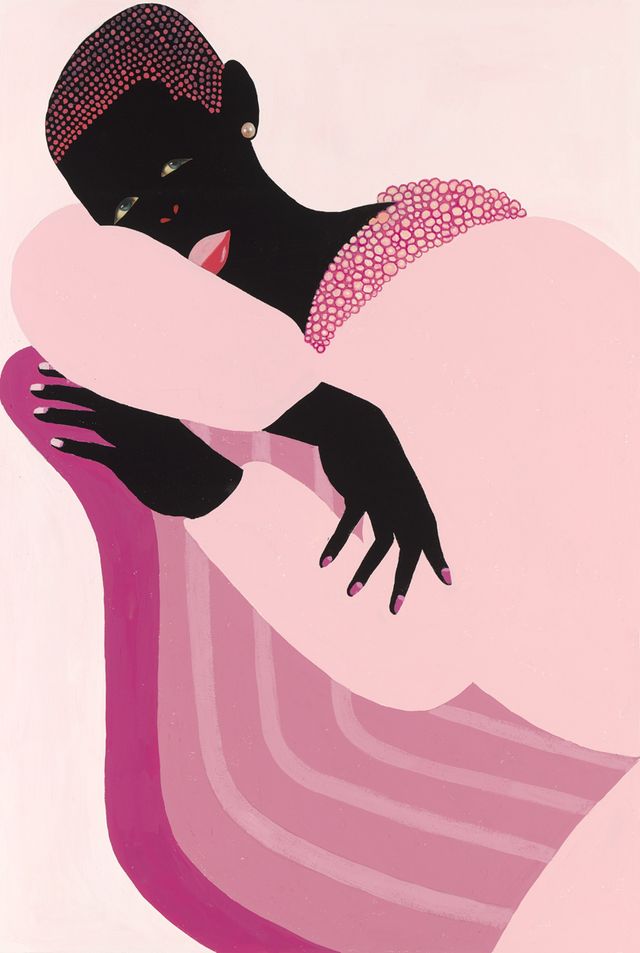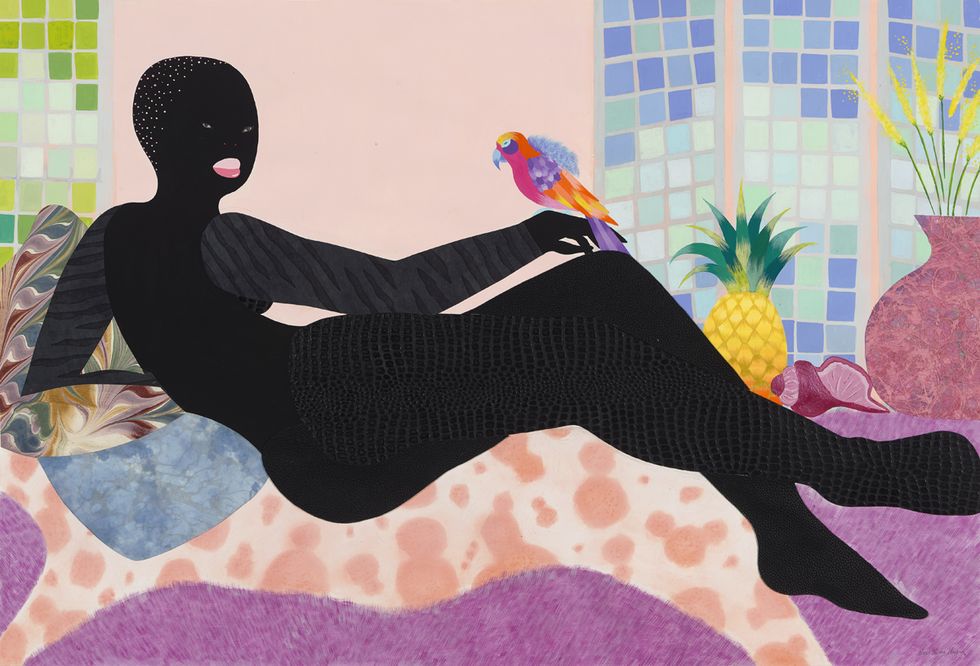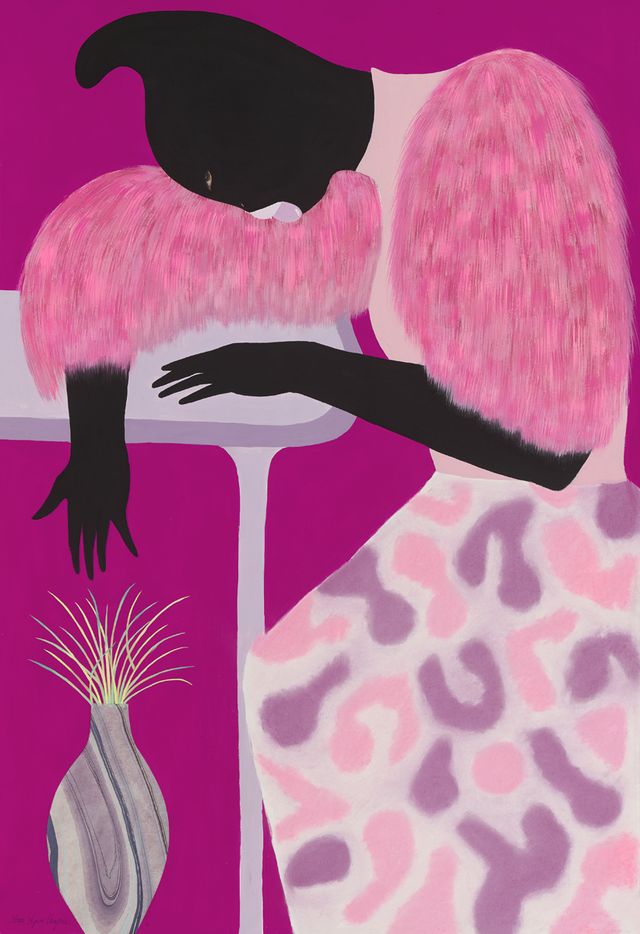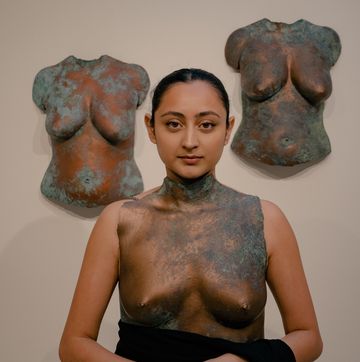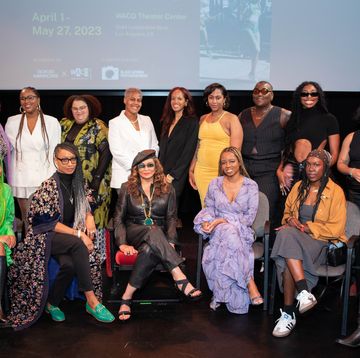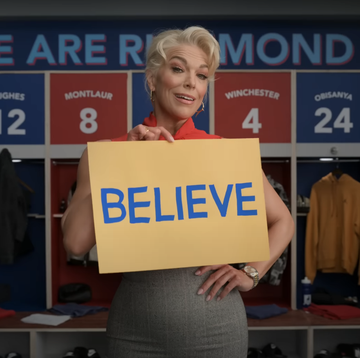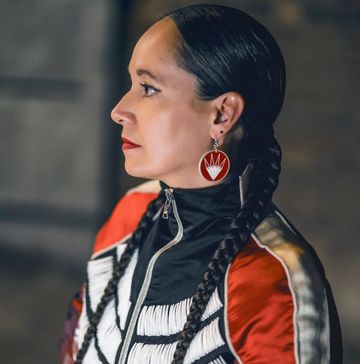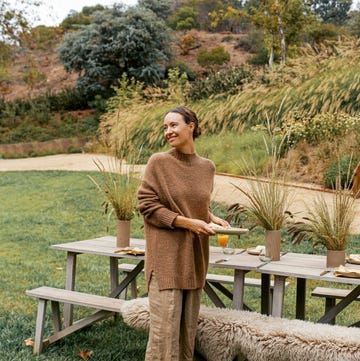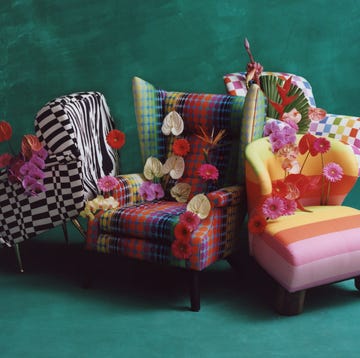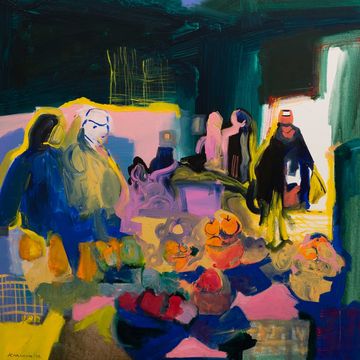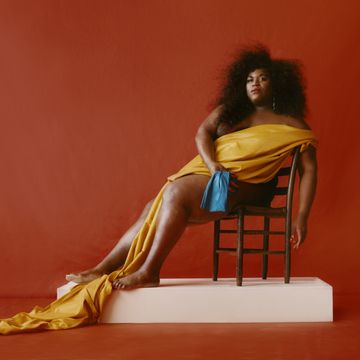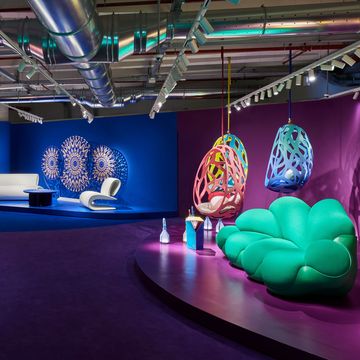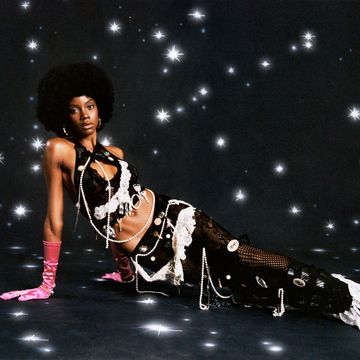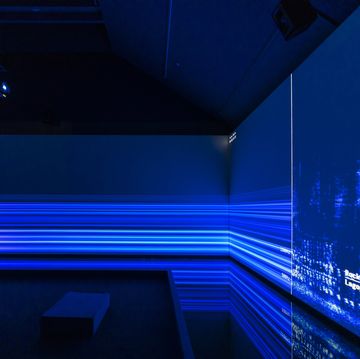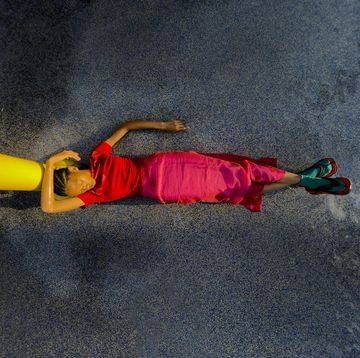When Grace Lynne Haynes was an undergraduate art student, her portraiture professor assigned a simple project: Paint a friend. As she worked on her subject's skin—a color similar to her own—Haynes came to a startling realization. She didn't know how to.
"I could paint [white] skin beautifully, nailing all the various undertones," Haynes tells ELLE.com via phone. "But I wasn't taught how to paint Black skin with the same complexities."
In an act of rebellion, as she tells it, Haynes began experimenting with flat female figures in a single pitch-black hue. The result was a series of abstract works celebrating Black beauty, while also denouncing an educational system that had failed her.
More From ELLE

The portraits became her signature, launching Haynes headfirst into the art world. The 27-year-old has already designed two New Yorker covers this year, including a much-lauded interpretation of Sojourner Truth swathed in millennial pink and mint green to mark the hundredth anniversary of the Nineteenth Amendment. Now she's preparing for an exhibition at the famed Luce Gallery in Turin, and a solo booth at the Armory Show in New York City next fall.
It's a whirlwind moment for Haynes, who has reservations about her meteoric rise to the top. "Black women in the art world can be tokenized," she says. "Art has a habit of becoming trendy, whether that's Black art or women's art, and the industry likes to hop on bandwagons. Then, when the trend is over, the artist suffers."
Below, Haynes talks about what it means to be a Black artist in 2020—and takes us inside her creative process.
You've said that your style developed out of necessity. How are you working to shift the tides of standards in art education?
I'm super grateful for the artists that have come before me, like Carrie Mae Weems, Wangechi Mutu, Kara Walker and Elizabeth Catlett. They all helped pave the way. These artists are all extremely talented and so present, but I never learned about them in my art history classes. There's actually quite a few Black women artists who aren't seen as artists that institutions can learn from. I have a real problem with that exclusion. Often, they are placed in a separate category, not seen as a full artistic being whose work is not confined to race.
You've chosen to focus on the nuances of Black womanhood. What do you thinking about when you paint?
I've always had a passionate interest about womanism and how women of color are left out of that conversation. There is a linear model utilized to express Black womanhood in mainstream media that I like to challenge. I want to break it apart and create a new reality. When I put brush to canvas I think about things like: Who are Black women when we are in safe spaces? What type of protection do Black women need? And what does feminism mean for Black women?
How has your perspective on art and beauty changed in 2020?
Nina Simone once said: "It's an artist's duty to reflect the times in which we live." I agree. It's my job as an artist to reflect what is going on in our world right now, so I'm constantly thinking about what my work will mean years from now. I hope people will understand the era I was creating in. Black womanhood is constantly taking on new forms. We're also in a period where, for the first time in history, women are empowered to pursue their passions and go after careers that weren't available to us before. I want the Black woman's perspective to be part of that conversation.
You use colors to tell stories—and to send messages. What do you hope people see in your portraits?
In Western society, dark and light are often at odds with one another. The light typically represents the inherently good and pure, while the dark is sinister and evil. I challenge that notion by showing that dark and light can exist together cohesively in one image. The black in the image is not evil, however it is the central tone in my work. My dark feminine figures represent elegance, beauty, and tranquility. The light colors surrounding the figure create a contrast that elevates her. From a young age I've noticed that the darker you are the less feminine you are perceived to be. I show a safe haven for Blackness, and a purity untainted by the world.
The women in your paintings are often depicted in safe spaces, like laying on beds or sitting by windows. Is that on purpose?
It's a given that Black women are strong, independent, and intelligent, however we are also feminine, nurturing and gentle. That side of our womanhood is often erased, and I want to show the world that the Black woman can represent femininity and sensuality. My own journey as a Black woman is centered around embracing my softness and vulnerability, and not feeling like super woman all of the time.
Where do you find inspiration?
Nature, people-watching in New York City, and high-end fashion shows. I especially admire the work of Valentino's Pierpaolo Piccioli of Valentino, who made history last year with his haute couture show [featuring more than 30 models of color, most of whom were Black]. It made me feel something, because it was so authentic.
You work out of a small studio space in Newark, New Jersey. Can you walk us through your creative process?
I put on my favorite dark-denim jeans and lucky painting sweater—it's grey, but you can't really tell because of all the paint splatter. I either listen to a Toni Morrison audiobook or the 1960 Miles Davis album "Sketches of Spain." We can't travel right now, of course, because of coronavirus, but songs like "Concierto De Aranjuez" let me dream about being far away. I typically start off by searching for the perfect pose of the figure I'll paint. For that, I look at fashion magazines for inspiration. I also look at social media posts. Once I decide on my character's pose, then I start to think about the the environment she would work best in. I play around with composition and color before starting work on the actual painting. That way I have an idea of what I'm aiming for.
The eyes from my paintings are collaged from magazines. I love taking a material object out of context and applying it to my paintings. It excites my creativity, because I get to push the boundaries of my work with new layers. Elements of surprise are such a fun way to engage with people.
Rose is a Senior Editor at ELLE overseeing features and projects about women's issues. She is an accomplished and compassionate storyteller and editor who excels in obtaining exclusive interviews and unearthing compelling features.


